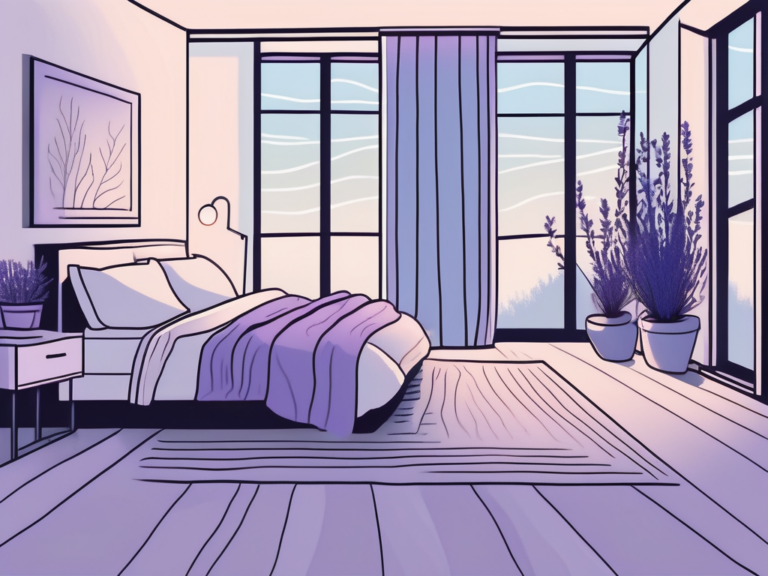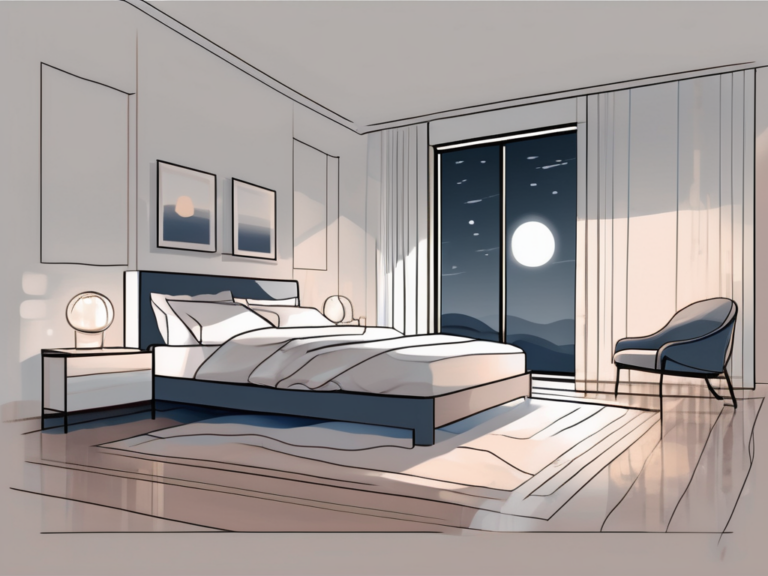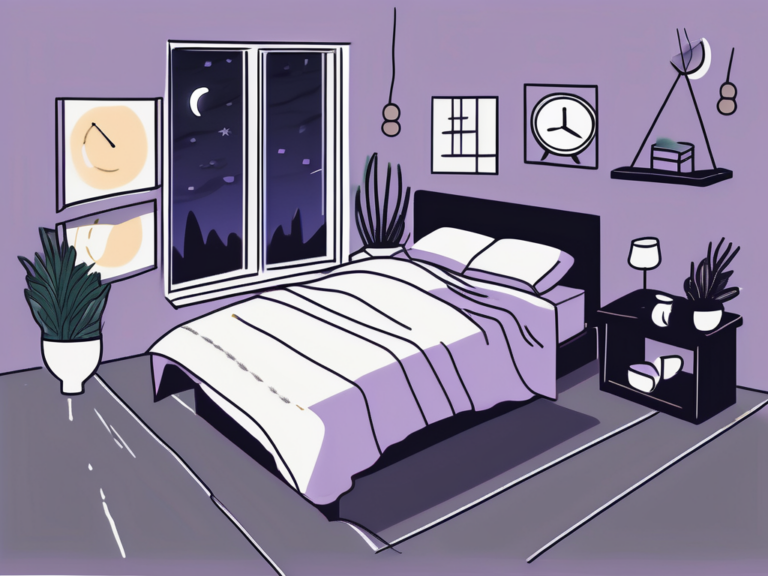can deviated septum cause sleep apnea
Having trouble breathing while you sleep? Waking up feeling exhausted, despite getting a full night’s rest? It’s possible that a deviated septum could be the culprit behind your sleep apnea struggles. Understanding how these two conditions are connected may provide valuable insights into improving your quality of sleep and overall well-being.
Understanding the Anatomy of the Nose
Before delving into the relationship between a deviated septum and sleep apnea, it’s essential to grasp the intricate anatomy of the nose. The nasal passage, composed of bone and cartilage, serves as the primary entry point for air into the body.
The septum, a thin wall made up of bone and cartilage, divides the nasal passage into two distinct sides. In an ideal scenario, the septum is straight, allowing for equal airflow through both nostrils.
But let’s take a closer look at the structure and function of the nasal passage to truly appreciate its complexity. The nasal cavity is lined with a specialized type of tissue called respiratory epithelium, which is responsible for filtering out dust, allergens, and other particles from the air we breathe. This remarkable defense mechanism helps protect our lungs from potential harm.
Furthermore, the nasal passage is not just a mere passageway for air; it also plays a crucial role in conditioning the air before it reaches our lungs. As the air flows through the nasal cavity, it is warmed and humidified, ensuring that it is at an optimal temperature and moisture level for optimal respiratory function. This process is essential in preventing irritation and damage to the delicate tissues of the respiratory system.
What is a Deviated Septum?
A deviated septum refers to when the septum is misaligned or crooked, leading to an obstruction in one or both sides of the nasal passage. This misalignment can be present at birth or caused by injury.
When the septum deviates, it may result in one nasal passage being smaller than the other, limiting the amount of air that can flow freely. This restriction in airflow can lead to various symptoms, including difficulty breathing through the nose, chronic congestion, frequent sinus infections, and even snoring.
The Structure and Function of the Nasal Passage
It’s important to understand that the nasal passage not only allows for breathing but also acts as a filter, warming and humidifying the air before it reaches the lungs. Any obstruction in this vital pathway can have significant repercussions on our overall health.
Moreover, the nasal passage is not just a simple conduit for air; it is a sophisticated system that plays a crucial role in our sense of smell. The olfactory epithelium, a specialized tissue located in the upper part of the nasal cavity, contains millions of tiny sensory cells that detect and transmit smells to our brain. This intricate process allows us to experience the rich and diverse world of scents.
Now, armed with a deeper understanding of the nasal anatomy and its intricate functions, let’s explore the connection between a deviated septum and breathing difficulties, including sleep apnea. By unraveling the complexities of this relationship, we can gain valuable insights into the impact of a deviated septum on our overall well-being.
The Link Between Deviated Septum and Breathing Difficulties
How a Deviated Septum Affects Airflow
When a septum is deviated, it can create a downward spiral in terms of airflow. As the air struggles to pass through the narrower nasal passage, it becomes turbulent, resulting in increased resistance and decreased oxygen intake.
Imagine trying to walk through a crowded street during rush hour. The narrow space between buildings forces you to squeeze through, causing you to slow down and struggle to breathe. Similarly, a deviated septum creates a bottleneck effect in the nasal passage, making it harder for air to flow freely.
With each breath, the body must exert more effort, leading to fatigue and poor sleep quality. It’s like climbing a steep hill with a heavy backpack on your shoulders. The restricted airflow caused by a deviated septum can exacerbate breathing difficulties during sleep, such as sleep apnea.
Deviated Septum and Chronic Nasal Congestion
In addition to affecting airflow, a deviated septum can also contribute to chronic nasal congestion. This congestion further restricts airflow and increases the likelihood of experiencing sleep apnea episodes.
Imagine a traffic jam on a busy highway. Cars are bumper-to-bumper, barely moving, and causing frustration and delays. Similarly, a deviated septum can lead to a constant traffic jam in your nasal passages, with mucus and congestion blocking the way. This congestion not only makes it difficult to breathe but also increases the risk of sinus infections and other respiratory issues.
Now that we understand the impact of a deviated septum on breathing, let’s explore what sleep apnea entails.
Sleep Apnea Explained
The Mechanics of Sleep Apnea
When we sleep, our muscles relax, including those responsible for keeping our airways open. For individuals with sleep apnea, these airways become partially or completely blocked, leading to pauses in breathing.
These pauses can last for a few seconds or even minutes, disrupting the normal sleep cycle and reducing the amount of restorative sleep received.
During these episodes of interrupted breathing, the brain senses the drop in oxygen levels and sends signals to wake the person up, often with a loud gasp or snort. While the individual may not fully wake up, these frequent awakenings prevent them from reaching the deep, restorative stages of sleep.
As a result, individuals with sleep apnea often wake up feeling tired and groggy, even after what seems like a full night’s sleep. This chronic sleep deprivation can have a significant impact on their overall health and well-being.
Risk Factors and Symptoms of Sleep Apnea
Several risk factors contribute to the development of sleep apnea, including obesity, age, and family history. Common symptoms include loud snoring, excessive daytime sleepiness, morning headaches, and difficulty concentrating.
Now, let’s delve into the potential connections between a deviated septum and sleep apnea.
A deviated septum occurs when the thin wall (nasal septum) that separates the nasal passages is displaced or crooked. This misalignment can obstruct airflow through the nose, making it harder for air to pass freely into the airways during sleep. While a deviated septum alone may not directly cause sleep apnea, it can contribute to the severity of the condition.
When combined with other risk factors, such as obesity or a family history of sleep apnea, a deviated septum can further impede the already compromised airflow. This can lead to more frequent and severe episodes of breathing pauses during sleep.
It’s important to note that not everyone with a deviated septum will develop sleep apnea, and not everyone with sleep apnea will have a deviated septum. However, if you have a deviated septum and are experiencing symptoms of sleep apnea, it is worth discussing with your healthcare provider to explore potential treatment options.
Deviated Septum as a Potential Cause of Sleep Apnea
Medical Research on Deviated Septum and Sleep Apnea
While not all individuals with a deviated septum experience sleep apnea, research suggests a significant association between the two conditions. A study published in the journal Otolaryngology-Head and Neck Surgery revealed that sleep apnea was more prevalent among individuals with a deviated septum than those without.
Understanding this link is crucial in developing effective treatment strategies for individuals suffering from both sleep apnea and a deviated septum.
The Role of Nasal Obstruction in Sleep Apnea
A deviated septum contributes to sleep apnea by increasing nasal obstruction. The obstruction prevents air from freely flowing, forcing individuals to rely on mouth breathing during sleep.
Mouth breathing can lead to dry mouth, snoring, and further complications within the airway, exacerbating sleep apnea symptoms.
Let’s delve deeper into the fascinating world of sleep apnea and its connection to a deviated septum. Sleep apnea is a sleep disorder characterized by pauses in breathing or shallow breaths during sleep. These pauses can last from a few seconds to minutes and may occur multiple times throughout the night. It is a serious condition that can have detrimental effects on one’s overall health and quality of life.
Now, you might be wondering, how does a deviated septum fit into this puzzle? Well, the septum is the thin wall of cartilage and bone that separates the two nostrils. When it becomes deviated, meaning it is shifted to one side, it can narrow the nasal passages, leading to nasal congestion and obstruction. This obstruction can disrupt the normal airflow during sleep, making it difficult for air to pass through the nose smoothly.
Imagine trying to breathe through a narrow straw instead of a wide-open pipe. That’s what individuals with a deviated septum experience when they try to breathe through their nose while sleeping. The restricted airflow forces them to compensate by breathing through their mouth, which can have a ripple effect on their sleep quality and overall well-being.
Moreover, mouth breathing during sleep can cause the mouth and throat to become dry, leading to uncomfortable symptoms such as a parched throat and increased snoring. Snoring, in itself, is a common symptom of sleep apnea and can further exacerbate the condition. The vibrations caused by snoring can contribute to the collapse of the airway, leading to more frequent breathing pauses and interruptions in sleep.
So, while a deviated septum may not directly cause sleep apnea, it certainly plays a significant role in its development and progression. By understanding this intricate relationship, medical professionals can devise targeted treatment plans that address both the deviated septum and sleep apnea, ultimately improving the quality of life for those affected by these conditions.
Treatment Options for Deviated Septum and Sleep Apnea
Non-Surgical Treatments and Lifestyle Changes
For mild cases, non-surgical treatments and lifestyle changes can provide relief. These include nasal decongestants, nasal steroid sprays, and avoiding allergens that may worsen nasal congestion.
However, it’s important to note that finding the right combination of treatments may require some trial and error. Each individual is unique, and what works for one person may not work for another. Therefore, it’s crucial to consult with a healthcare professional to determine the most suitable approach for your specific condition.
Additionally, making simple lifestyle changes such as maintaining a healthy weight, sleeping on your side, and avoiding alcohol and sedatives before bedtime can alleviate sleep apnea symptoms. These changes may seem small, but they can have a significant impact on your overall well-being.
Surgical Procedures for Deviated Septum and Sleep Apnea
In more severe cases, surgical intervention may be necessary. Septoplasty, a surgical procedure to correct a deviated septum, can significantly improve airflow and reduce the obstruction within the nasal passage.
During septoplasty, the surgeon carefully straightens the deviated septum, allowing for better airflow and improved breathing. This procedure is typically performed under general anesthesia and may require a short hospital stay.
For individuals with sleep apnea, additional surgical procedures such as uvulopalatopharyngoplasty or maxillomandibular advancement may be considered. Uvulopalatopharyngoplasty involves removing excess tissue from the throat to widen the airway, while maxillomandibular advancement repositions the upper and lower jaws to create more space for breathing.
It’s important to note that surgical interventions are typically reserved for cases where non-surgical treatments have failed to provide adequate relief. Your healthcare provider will carefully evaluate your condition and discuss the potential risks and benefits of surgery before making any recommendations.
The Impact of Treatment on Sleep Apnea Symptoms
Expected Outcomes After Treatment
With the appropriate treatment approach, individuals with a deviated septum and sleep apnea can experience significant improvements in their quality of life. After septoplasty, a surgical procedure that corrects a deviated septum, many individuals report better breathing, reduced snoring, and improved sleep patterns.
Septoplasty involves repositioning or removing the obstructing tissues within the nose, allowing for better airflow and reducing the severity of sleep apnea symptoms. By addressing the underlying cause of nasal obstruction, this procedure can lead to a remarkable transformation in sleep quality.
Furthermore, surgical procedures targeted specifically at sleep apnea have shown promising results in reducing the number of apnea episodes and improving overall sleep quality. These procedures, such as uvulopalatopharyngoplasty (UPPP) or maxillomandibular advancement (MMA), aim to address the anatomical factors contributing to sleep apnea, such as excess tissue in the throat or jaw misalignment.
UPPP involves removing excess tissue from the throat, including the uvula, tonsils, and parts of the soft palate, to widen the airway. This procedure can significantly reduce the occurrence of apnea episodes and improve breathing during sleep. On the other hand, MMA repositions the upper and lower jaws to enlarge the airway, providing a long-term solution for individuals with severe sleep apnea.
Long-Term Management of Sleep Apnea with a Deviated Septum
While treatment options for sleep apnea and a deviated septum can provide immediate relief, it is essential to establish long-term management strategies to ensure sustained improvement in symptoms. Regular follow-up appointments with healthcare professionals specializing in sleep medicine can help monitor the progress and make necessary adjustments to the treatment plan.
In addition to medical interventions, weight management plays a crucial role in the long-term management of sleep apnea. Obesity is a significant risk factor for developing sleep apnea, and losing weight can lead to a reduction in the severity of symptoms. Adopting a healthy lifestyle that includes regular exercise and a balanced diet can contribute to weight loss and improve overall respiratory health.
Moreover, continued adherence to lifestyle changes is key to maintaining optimal respiratory health. Avoiding alcohol and sedatives, which can relax the muscles in the throat and worsen sleep apnea, can significantly impact the effectiveness of treatment. Additionally, practicing good sleep hygiene, such as maintaining a consistent sleep schedule and creating a comfortable sleep environment, can further enhance the benefits of treatment.
By addressing the nasal obstruction caused by a deviated septum and implementing long-term management strategies, individuals can take significant steps towards improving breathing, achieving better sleep, and ultimately enhancing overall well-being. The journey to managing sleep apnea is a comprehensive one, requiring a multidisciplinary approach that combines medical interventions, lifestyle modifications, and ongoing support from healthcare professionals.






